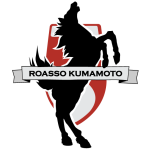| Coach | NA |
| Venue | K’s Denki Stadium |
Mito Hollyhock Trivia
Mito Hollyhock predictions
Predictions for Mito Hollyhock: See upcoming and historic predictions for Mito Hollyhock below.
Disclaimer: Past performance does not guarantee future results. Betting involves risk; only wager what you can afford to lose. Always gamble responsibly.
Mito Hollyhock Opinions
 Who is your favorite Mito Hollyhock player of all time?
Who is your favorite Mito Hollyhock player of all time?
Mito Hollyhock latest results
| 13/04 | - | ||
| 07/04 | - | ||
| 03/04 | 1 - 1 | ||
| 30/03 | 0 - 0 | ||
| 24/03 | 0 - 0 |
J2 League standings
| Rank | Team | MP | W | D | L | GF | GA | GD | Pts |
|---|---|---|---|---|---|---|---|---|---|
| 1 |
 Fagiano Okayama
Fagiano Okayama
|
7 | 5 | 2 | 0 | 9 | 2 | 7 | 17 |
| 2 |
 Shimizu S-pulse
Shimizu S-pulse
|
7 | 5 | 0 | 2 | 11 | 8 | 3 | 15 |
| 3 |
 Vegalta Sendai
Vegalta Sendai
|
7 | 3 | 4 | 0 | 6 | 3 | 3 | 13 |
| 4 |
 V-varen Nagasaki
V-varen Nagasaki
|
7 | 3 | 3 | 1 | 10 | 6 | 4 | 12 |
| 5 |
 Yokohama FC
Yokohama FC
|
7 | 3 | 2 | 2 | 9 | 4 | 5 | 11 |
| 6 |
 Ventforet Kofu
Ventforet Kofu
|
7 | 3 | 2 | 2 | 11 | 8 | 3 | 11 |
| 7 |
 Renofa Yamaguchi
Renofa Yamaguchi
|
7 | 3 | 2 | 2 | 8 | 5 | 3 | 11 |
| 8 |
 Ehime FC
Ehime FC
|
7 | 3 | 1 | 3 | 9 | 8 | 1 | 10 |
| 9 |
 Montedio Yamagata
Montedio Yamagata
|
7 | 3 | 1 | 3 | 8 | 7 | 1 | 10 |
| 10 |
 Blaublitz Akita
Blaublitz Akita
|
7 | 3 | 1 | 3 | 6 | 5 | 1 | 10 |
| 11 |
 Tochigi SC
Tochigi SC
|
7 | 3 | 1 | 3 | 7 | 12 | -5 | 10 |
| 12 |
 Iwaki
Iwaki
|
7 | 2 | 3 | 2 | 11 | 5 | 6 | 9 |
| 13 |
 Oita Trinita
Oita Trinita
|
7 | 2 | 3 | 2 | 6 | 5 | 1 | 9 |
| 14 |
 Kagoshima United
Kagoshima United
|
7 | 2 | 2 | 3 | 8 | 14 | -6 | 8 |
| 15 |
 Roasso Kumamoto
Roasso Kumamoto
|
7 | 2 | 2 | 3 | 7 | 13 | -6 | 8 |
| 16 |
 JEF United Chiba
JEF United Chiba
|
7 | 2 | 1 | 4 | 12 | 12 | 0 | 7 |
| 17 |
 Fujieda MYFC
Fujieda MYFC
|
7 | 2 | 1 | 4 | 3 | 10 | -7 | 7 |
| 18 |
 Mito Hollyhock
Mito Hollyhock
|
7 | 1 | 2 | 4 | 3 | 6 | -3 | 5 |
| 19 |
 Thespakusatsu Gunma
Thespakusatsu Gunma
|
7 | 1 | 2 | 4 | 5 | 9 | -4 | 5 |
| 20 |
 Tokushima Vortis
Tokushima Vortis
|
7 | 1 | 1 | 5 | 6 | 13 | -7 | 4 |
About Mito Hollyhock
Mito Hollyhock is a professional football club based in Mito, Ibaraki, Japan. The club was established in 1990 as Prima Ham FC Tsuchiura and later renamed Mito Hollyhock in 1997, taking its name from the hollyhock flower, a symbol of the Mito clan. The club competes in the J2 League, the second tier of the Japan Professional Football League (J.League).
Mito Hollyhock's journey to the professional leagues was not straightforward. After its establishment, the club spent several years in the regional leagues before being promoted to the Japan Football League (JFL) in 1996. In 1999, Mito Hollyhock joined the J2 League, where it has remained since. Despite never having won the J2 League or advanced to the top-tier J1 League, the club has maintained a strong presence in the J2 League and is known for its tenacity and fighting spirit.
The club's home games are played at the K's denki Stadium Mito, a multi-purpose stadium with a capacity of over 12,000 spectators. The stadium is known for its vibrant atmosphere, with passionate fans known as "Hollyhockers" cheering on their team in every match.
Mito Hollyhock is also recognized for its commitment to local community engagement. The club runs several youth teams and football schools, aiming to nurture local talent and promote football within the region. The club's mascot, Holly-kun, is a popular figure in Mito and often appears at local events and festivals.
Over the years, Mito Hollyhock has produced several notable players who have gone on to represent Japan at the international level. This includes players like Yoshito Okubo, who started his professional career at Mito before going on to become one of the top scorers in the J1 League and representing Japan in the FIFA World Cup.
Despite its modest size and resources compared to other clubs in the J.League, Mito Hollyhock continues to compete with resilience and determination. The club's philosophy is encapsulated in its motto, "Never give up, Mito!", reflecting its unwavering commitment to football and its local community.















